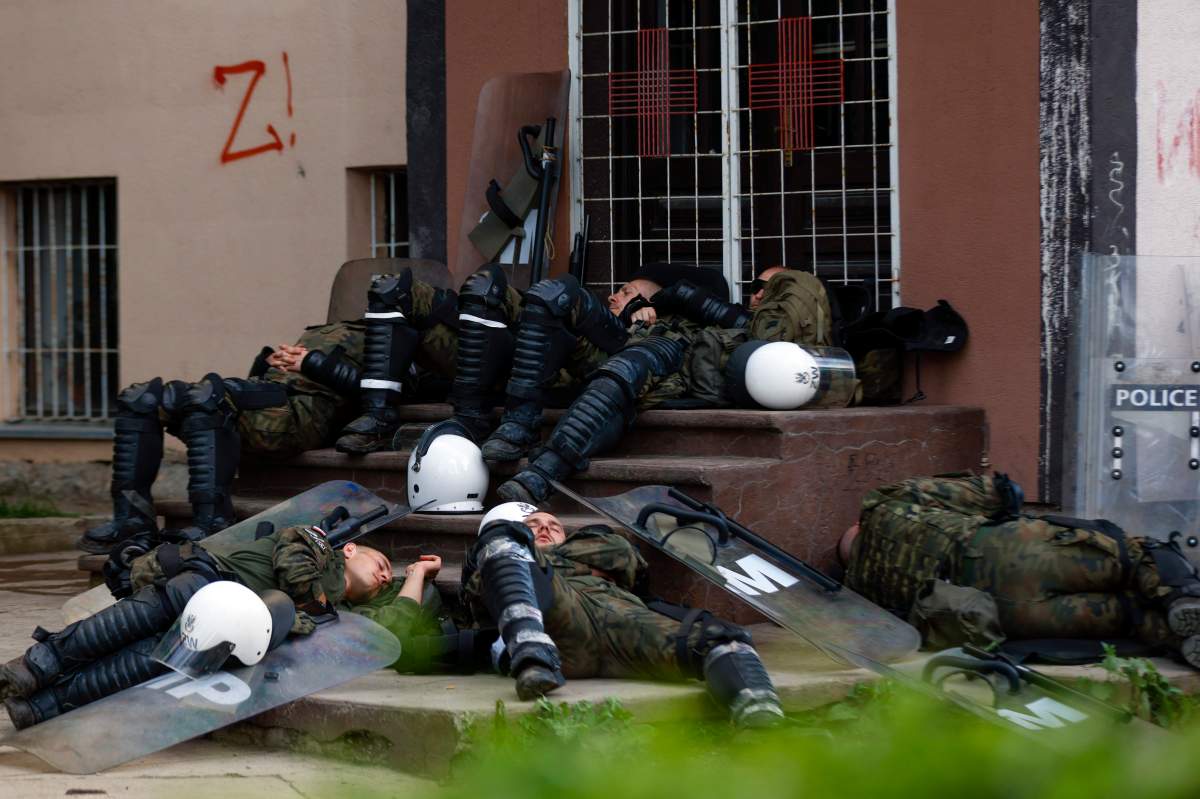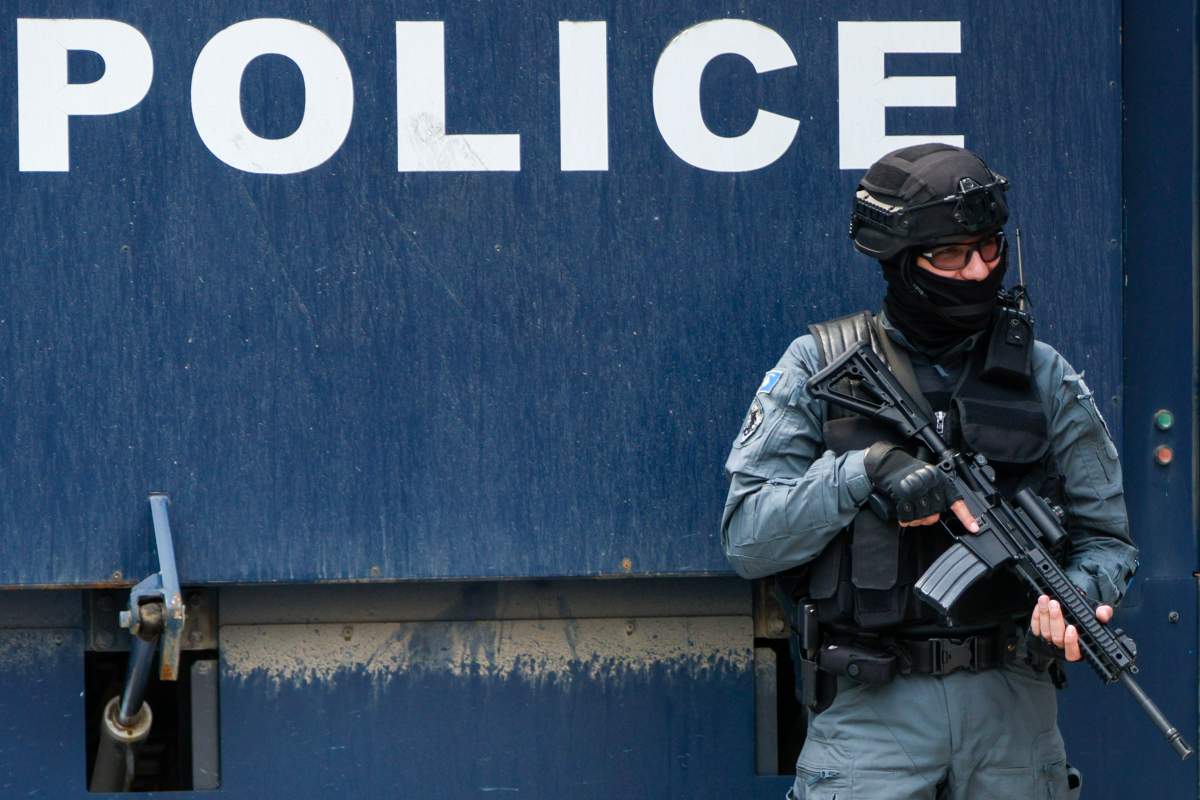Tensions between Kosovo and Serbia have flared up in recent days, reigniting a conflict in the region.

On Tuesday, NATO announced it will be sending 700 additional troops to northern Kosovo a day after over 30 were injured due to protests in the region.
The conflict between the two countries is deep-rooted. But what is driving the recent flare in tensions? Here’s what to know.
From election to conflict
The recent tensions were sparked due to an election held in late April.
Serbs, who make up a large portion of the population in northern Kosovo, boycotted the election due to a deep-seated mistrust of the Kosovo government, according to Ilva Tare, a senior fellow with the think tank Atlantic Council, who specializes in the Balkans.
Tare explained that the turnout from the election was only around three per cent due to the boycott, but it has been recognized by the international community, including the U.S.
Kosovo’s prime minister, Albin Kurti, tried to move forward from the election and have the newly elected mayors, who are Albanian, work from municipal offices, but that move has proven to be the straw that broke the camel’s back, causing the recent violence.
“(Serbs) don’t believe they are respected enough and basically don’t feel safe in their homes in northern Kosovo,” Tare said.
“Unfortunately, the situation has created a dangerous moment for the region.”

Serbs tried to block the officials from entering the buildings, calling the ethnic Albanian officials “fake” mayors and demanding they withdraw from northern Kosovo.
Kosovo police fired tear gas to disperse the crowd, leaving over 50 protesters and 30 international troops injured, of which 11 were Italians and 19 were Hungarians, according to NATO.
Tare said that Kosovo did not get a green light from the international community to bring the mayors to the buildings, and there has been growing international frustration with the country.

Get daily National news
Part of that frustration comes from Kosovo not delivering on an agreement originally signed in 2015 to establish a network of Serbian municipalities in the northern region, according to Tare.
The flaring tensions also come as European leaders and the West are focused on shoring up continued support for Ukraine as it defends against Russia’s invasion — and preventing Russian meddling or interference in continental affairs.
While Canada, Washington and most EU nations recognize Kosovo’s statehood, Serbia has the backing of Russia and China in rejecting it.
What's behind the deep mistrust?
The distrust between Serbs in Kosovo and the Kosovo government is deeply rooted.
Going back in history, the region that is Kosovo was controlled by the Ottomans for centuries before coming under Serbian control in 1912. It was partitioned after World War One into what went on to be known as Yugoslavia.
Parts were also absorbed into Albania after World War Two, but most of the region became an autonomous province of Serbia.
Independence tensions flared in the 1980s, with Albanians advocating that Kosovo be given the status of a republic and Serbs opposing that. The resulting violence and tensions spilled over into sectarian civil war in the Balkans in the early 1990s as Yugoslavia broke apart, and then the Kosovo War came in the late 1990s.
NATO’s involvement in the region came to a head in 1999 when it began an air bombing campaign to stop atrocities being committed against civilians by Serbian leaders after an ethnic Albanian rebellion in 1998 to rid the country of Serbian rule, according to the U.S. State Department.
Thousands died, and NATO’s involvement ultimately led to Serbia pulling out of the region and ceding control to international peacekeepers.
That is the origin of NATO’s KFOR mission, which until now has seen around 3,800 NATO troops stationed in Kosovo.
Kosovo declared independence in 2008. Serbia, along with Russia, China, and five EU countries, does not recognize the legitimacy of the state and Serbia believes it should still be a part of its country.
Why is Russia a concern?
Complicating matters now is Russia weighing in on the dispute between Kosovo and Serbia.
Russian Foreign Minister Sergei Lavrov said recently that the situation in Kosovo is alarming and could provoke another conflict in Europe.
“A huge explosion is being prepared in the centre of Europe, in the place where, in 1999, NATO attacked Yugoslavia, violating every imaginable (international) principle,” he said, according to Russian state news agency RIA Novosti.
Russia has a close relationship with Serbia, Tare said, with many believing that the country’s president, Aleksandar Vučić, is a proxy for Russia.
“Kosovo feels the threats from Belgrade are serious and can quickly develop into a dangerous situation due to Russia’s influence in Belgrade,” she said.
Serbia has been beefing up its troop presence at the Kosovo border.
China on Tuesday expressed its support for Serbia’s efforts to “safeguard its sovereignty and territorial integrity.”

The latest moves come almost 20 years after U.S. President Joe Biden, speaking as a senator in 1999, warned that it would take time for stabilization in a region that he said was vital to protect.
“After the carnage, Kosovo needs a breathing space for civil society to re-emerge,” he said in a speech to the Wilson Centre foreign policy think tank at the time.
“Our only exit strategy should be to leave Kosovo when we have fully achieved our goals. The American people must know that we are there for the long haul because it is in our national interest to do so.”
Going forward, Tare believes that the only solution is dialogue and to come to a compromise that both countries feel is equally fair.
“There is some complicated politics that need to be played.”
— with files from the Associated Press










Comments